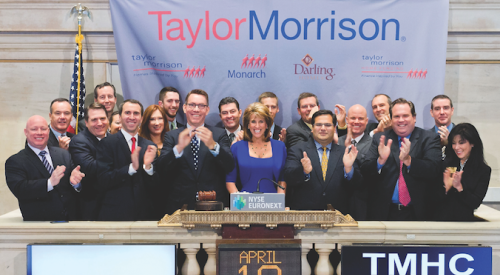In this issue that is all about bigness, it is worth some time to wonder what "big" among home builders really means. In days gone by, though near enough that the memory still hurts, big impressed. Historically, those that controlled the money rewarded big with dollars. Manufacturers saved the best pricing for big. Employees - managers and trades alike - wanted to work for big. And even among new home buyers, big impressed.
But where is the value of big today? Certainly not with those who control the dollars on Wall Street. In 1999 the Giants of the GIANTS - those publicly traded home builders that fill the top 10 slots on the 400 list - posted record numbers in every measurable category. What’s more, these numbers weren’t a single- year phenomenon, but rather a continuation of an era of strong earnings growth and improved margins.
Wall Street’s reward for these accomplishments? Stock valuations that are at or near record lows for the sector. For example, in early March No. 2, Kaufman and Broad, had a market capitalization of $795.5 million on net income of $147.5 million. In stark contrast, during the same week Amazon.com’s market cap was $22.8 billion on zero earnings and $355 million in total revenue.
As senior editor Pat O’Toole explains in the article on page 128, big means nothing to investors if it’s in a sticks-and-bricks industry like construction. Analysts, fund managers and institutional investors all believe that the housing bubble is forever ready to burst and that builders are one-dimensional businesses totally susceptible to every uptick in interest rates and dip in housing starts.
Changing that perception today would, to quote housing industry analyst Tim Jones, "take an act of God." While I’m certain Tim Jones already knows more about stock valuations than I could ever learn, I beg to differ.
What makes me believe in a different future is something I learned at a recent roundtable PB sponsored with the Research Center of NAHB. A presentation by Charlie Scott of The Estridge Companies made me think about home builders in a new way. Scott approached the general topic of the manufacturer/builder roundtable - the way our industry introduces, evaluates and selects new technology - from a unique perspective. He detailed the partnering lifecycle of builders, particularly as it relates to the product information needs at the various stages.
In his talk, Scott identified four lifecycle stages: infancy - zero to 100 homes, emerging - 100 to 200 homes, growth - 200 to 400 homes and finally, mature - more than 400 homes.
Notice, not once did Charlie talk about builders based on volume as so many in and outside of the industry do. This pre-occupation with size and habit of designating companies as small, medium or large-volume builders misses the point. Innovation happens at every stage in the corporate lifecycle and by focusing on volume we’re devaluing our industry’s worth.
Want some proof? Take a look at our list of Movers & Shakers on page 112. The companies profiled there represent every lifecycle stage from infancy to mature, but what they all have in common is that they strive to be the same thing: value-based businesses and not just volume-based businesses. That goal makes all the difference.
The biggest of the big on this year’s list of companies to watch, Lennar Corp., says that it’s impending purchase of U.S. Home Corp. isn’t about creating a bigger company but rather a better one. The ways management intends to make this happen are almost as numerous as its combined closings will be.
The story is the same for every company on the GIANT 400 list. Each, at its own stage of development, is pursing a strategy that will make it a leader in every way.
Housing isn’t just a sticks-and-bricks industry as Wall Street thinks, nor is it part of the "old economy." Ours is an industry of 90,000 companies all striving to be better and not just bigger.












